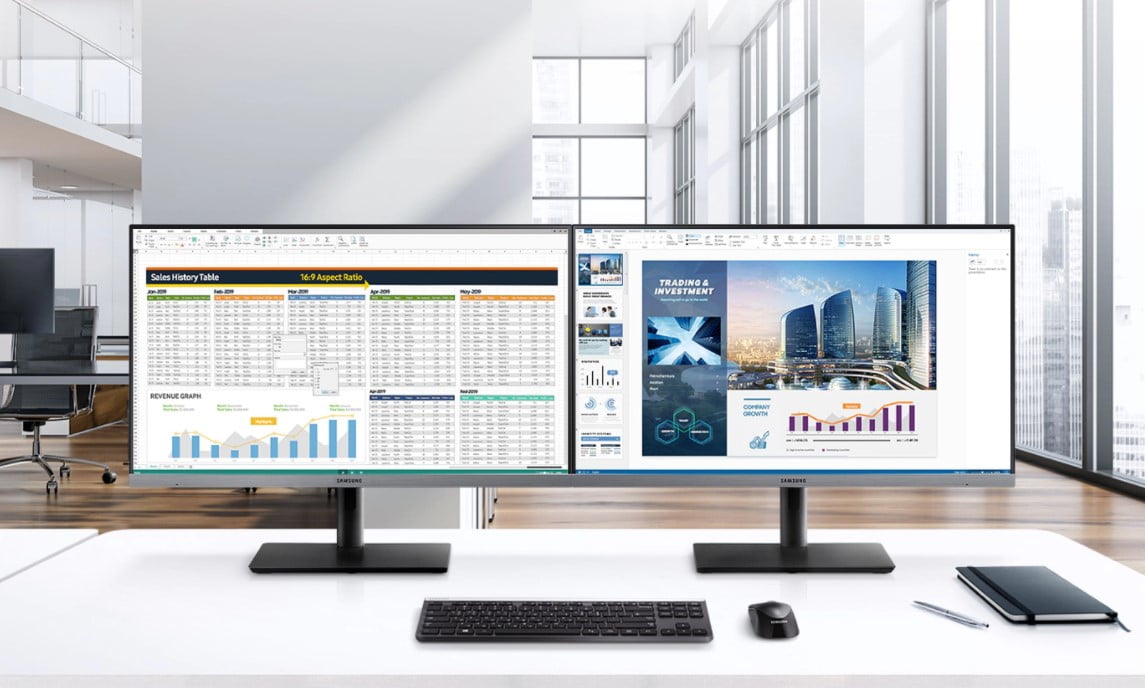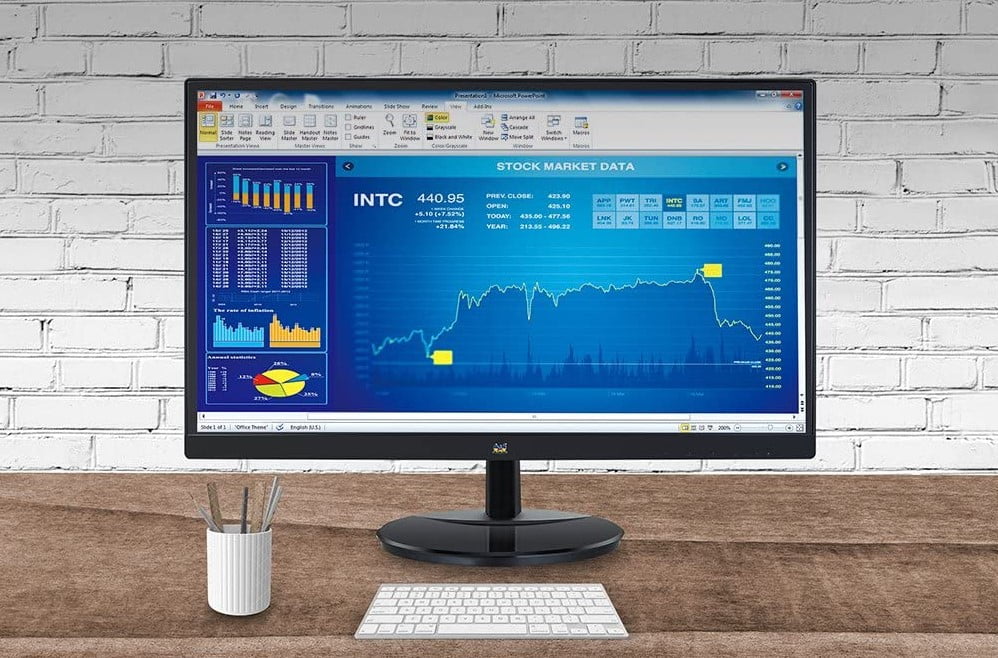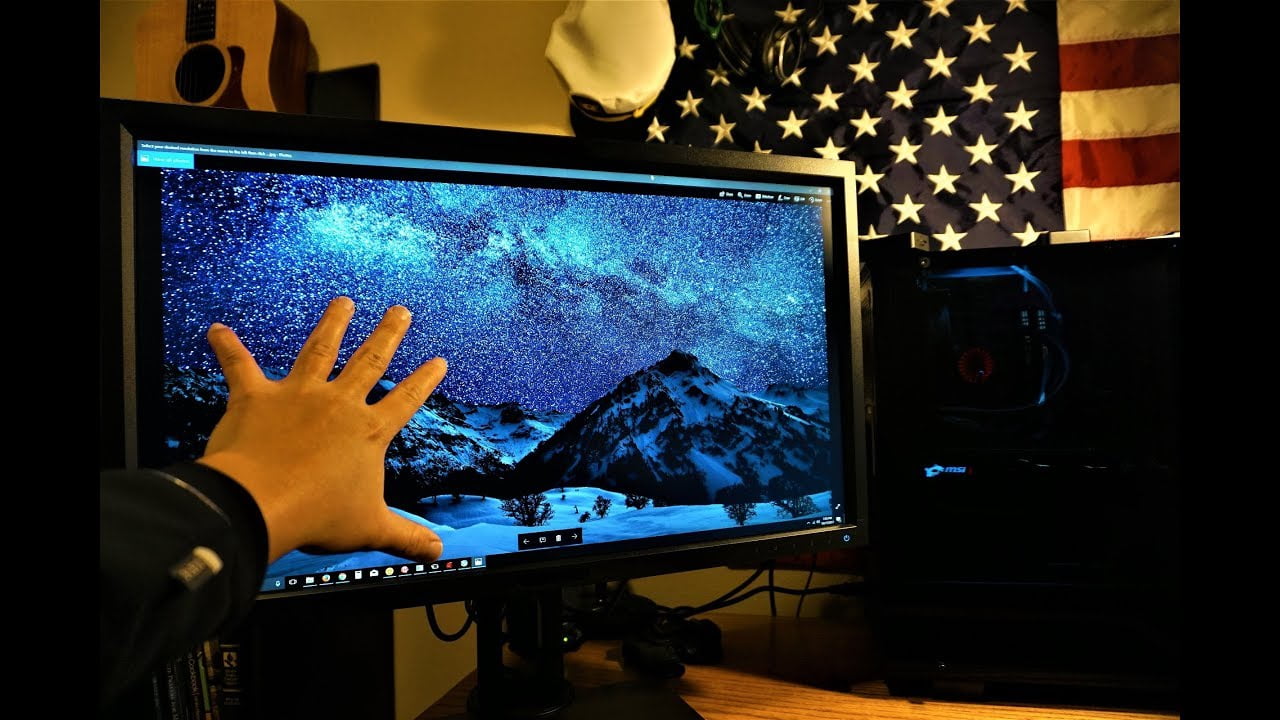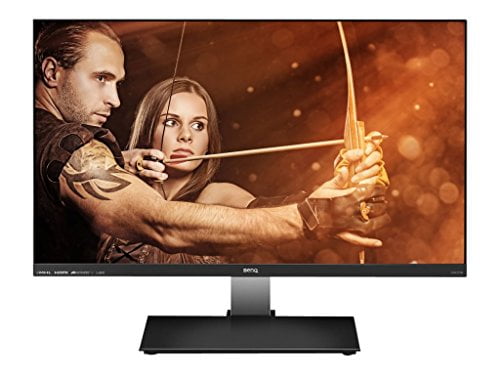If you are shopping for a new screen, you may be comparing gaming monitors with a 1ms vs 2ms response time. First things first, if you don’t know what response time is on a monitor, we explain it in a bit. The best gaming monitors available typically feature one of the aforementioned response times. Which gaming monitor should you choose? Keep reading to find out.
KEY TAKEAWAYS:
- Response time refers to how fast a gaming monitor can change the colors of a pixel, so a lower number is better.
- 1ms is the best response time you can shoot for when it comes to smooth gameplay, though the difference between 1ms displays and 2ms monitors will be negligible.
- A 1ms gaming monitor may be more “future-proof” but they also tend to be more expensive.
Differences Between 1ms and 2ms Response Times
First of all, what are monitor response times? A monitor’s response time measures how long it takes the display to convert pixels from one color to another, so it is also referred to as pixel response time. Response times can range from the fastest, 1ms, to somewhere along the lines of 16ms or even slower. With that in mind, 1ms and 2ms are extremely close and, in most cases, would be considered essentially the same, though some competitive gamers may beg to differ. You may notice some subtle differences during gameplay, but it will not be as stark as when comparing gaming monitors with 144Hz vs 60Hz refresh rates. You’ll see a slight difference with monitors at 1ms vs 4ms response rate, as well as gaming monitors with 5ms vs 2ms response rates. It just depends on how much response time you need.
Here are how the differences between 1ms and 2ms response times come into play.
Insider Tip
No matter which you choose, you can rest easy knowing that your gameplay experience will be smooth. Both 1ms and 2ms are fast.
Gameplay as Smooth as Butter
Both 1ms and 2ms gaming displays will boast ultra-smooth gameplay, especially when compared to monitors with slower response times in the 10ms range. Response time is directly linked to refresh rate and frame rate, after all, so the faster your monitor can change colors, the lower your input and display lag will be. Refresh rates are often hampered by the response time and whether or not the monitor can handle a variable refresh rate, such as when comparing FreeSync vs FreeSync 2.
Future Compatibility
PC gaming moves at the speed of light, with tech that is constantly evolving and improving upon itself. As of this writing, 1ms is essentially the fastest response time available on gaming monitors. This may not always be the case, so to future-proof your gaming rig, go with a 1ms monitor over a 2ms monitor, as future games may not be too compatible with the slower response time.
Price and Measurement Type
1ms monitors tend to be more expensive than 2ms monitors, though there could be some variation when it comes to the type of measurement the manufacturer is using. Response time that is measured in grey-to-grey (GtG) is usually a bit slower in real-world situations than those that are measured in black-to-black, though cheaper. A monitor that advertises itself as having a 1ms response time in grey-to-grey may actually be the same as a 2ms response time in black-to-black.
F.A.Q.S
How do you reduce display motion blur?
A monitor with a fast response time should automatically reduce display motion blur, though a higher refresh rate will help.
How many FPS will you get from the games you intend to play?
This depends on the gaming monitor you choose, the image quality, and the display type.
75Hz vs 144Hz – Which monitor offers smoother gameplay?
A 144Hz display will offer an ultra-smooth gaming experience, while a 75Hz monitor will be slightly less smooth.
STAT: Response times are usually measured from grey-to-grey transitions, based on a VESA industry standard from 10% to 90% points in the pixel response curve. (source)

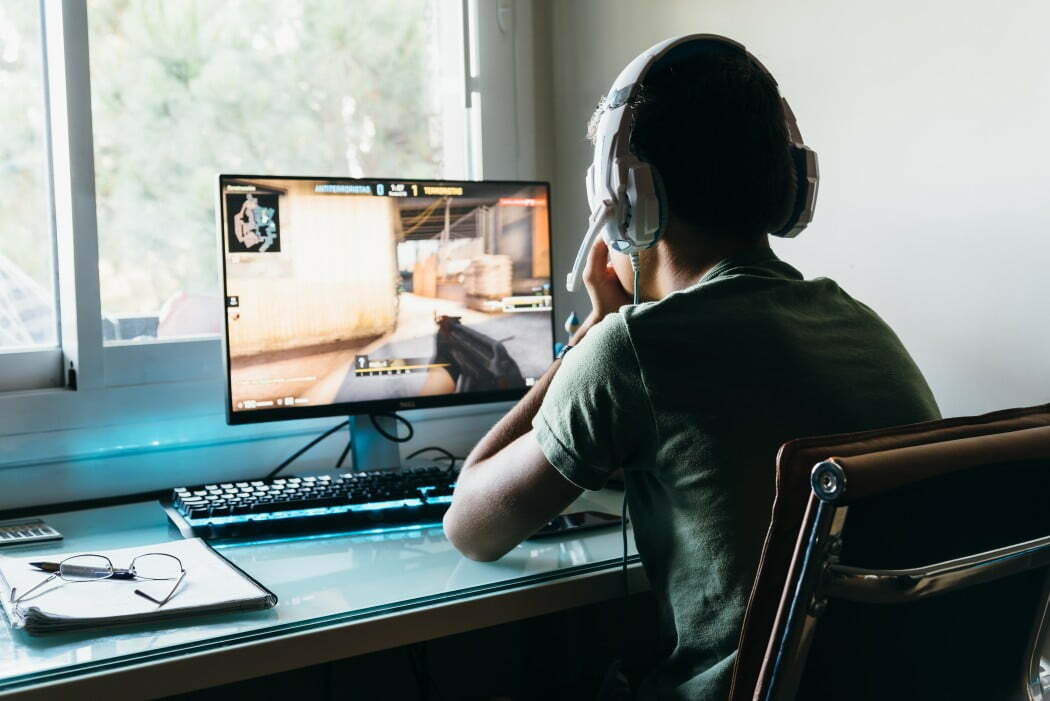



























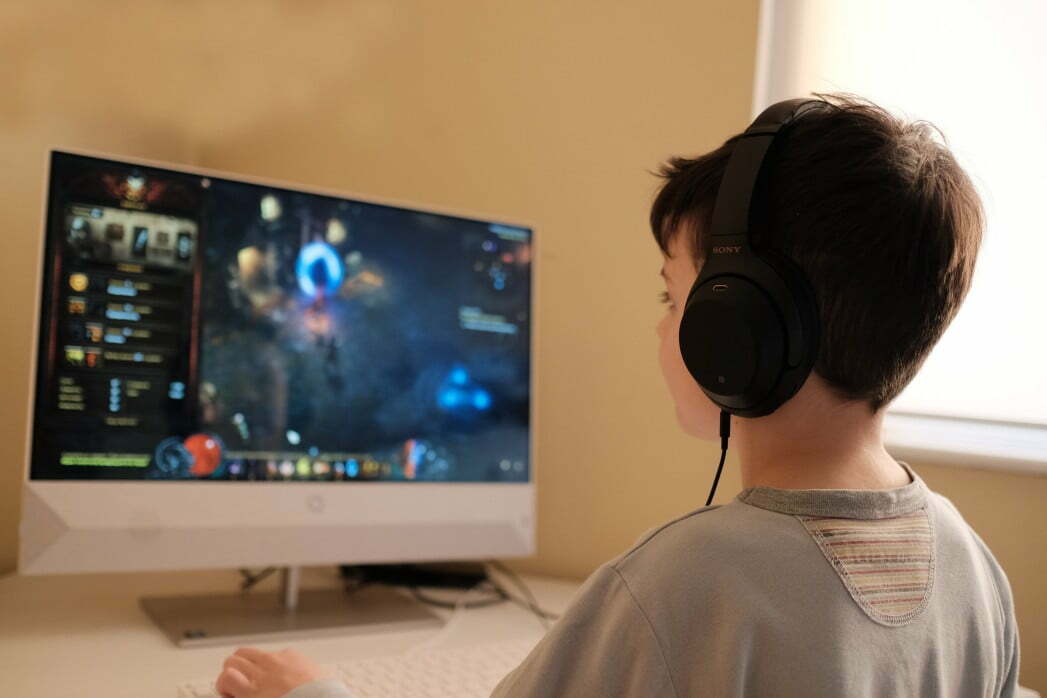
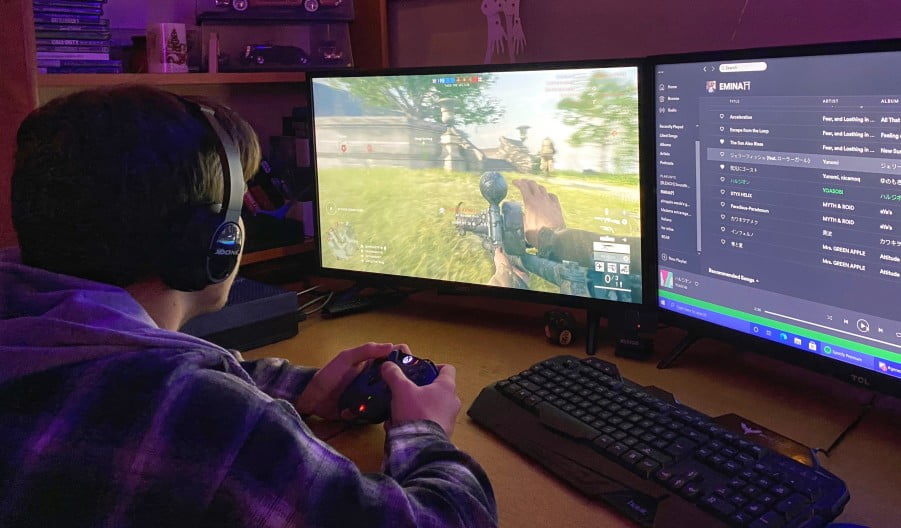
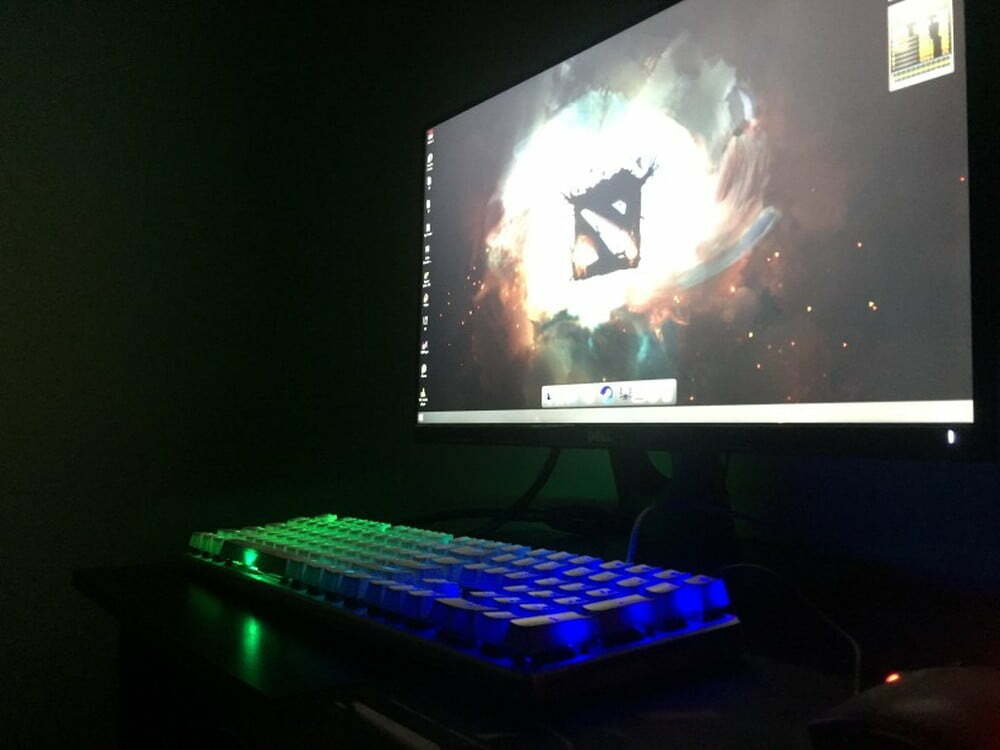

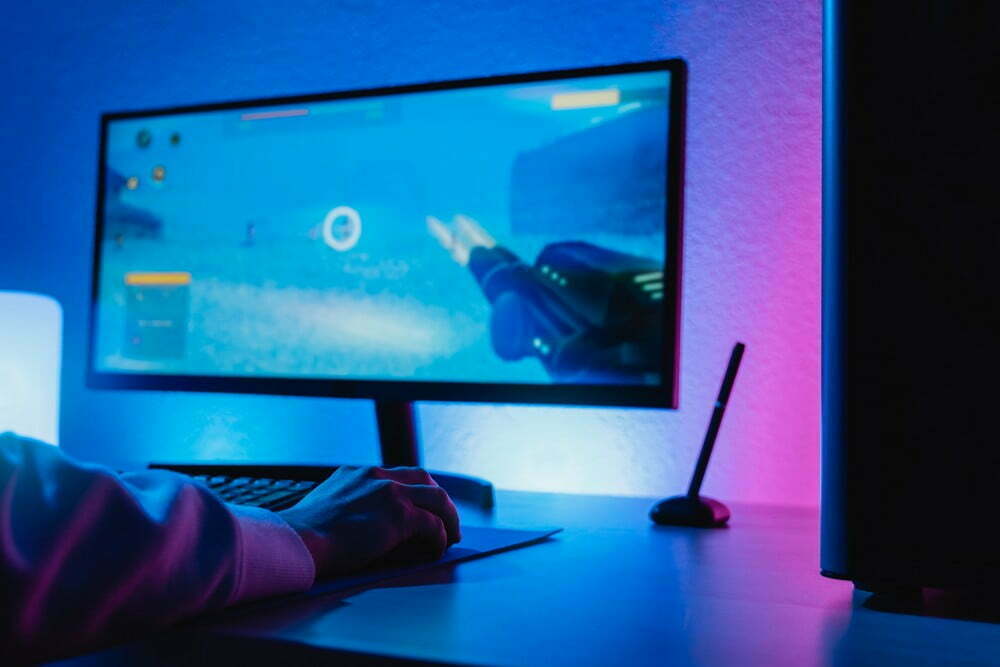
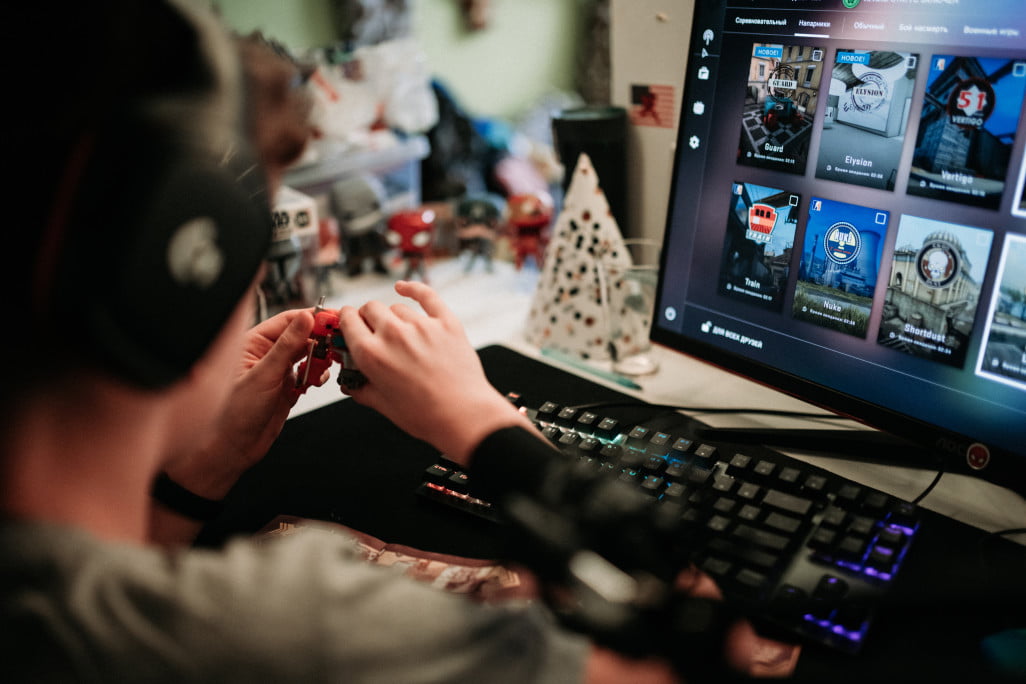
![Best 27 Inch Computer Monitor in [year] 27 Best 27 Inch Computer Monitor in 2026](https://www.gadgetreview.dev/wp-content/uploads/how-to-buy-the-best-computer-monitor.jpg)
![Best BenQ Monitors in [year] 28 Best BenQ Monitors in 2026](https://www.gadgetreview.dev/wp-content/uploads/best-benq-monitor-image.jpg)
![Best ASUS Monitors in [year] 29 Best ASUS Monitors in 2026](https://www.gadgetreview.dev/wp-content/uploads/best-asus-monitor-image.jpg)
![Best Dell Monitors in [year] 30 Best Dell Monitors in 2026](https://www.gadgetreview.dev/wp-content/uploads/best-dell-monitor-image.jpg)
![Best HP Monitors in [year] 31 Best HP Monitors in 2026](https://www.gadgetreview.dev/wp-content/uploads/best-hp-monitor-image.jpg)
![Best Lenovo Monitors in [year] 32 Best Lenovo Monitors in 2026](https://www.gadgetreview.dev/wp-content/uploads/best-lenovo-monitor-image.jpg)
![Best ViewSonic Monitors in [year] 33 Best ViewSonic Monitors in 2026](https://www.gadgetreview.dev/wp-content/uploads/best-viewsonic-monitor-image.jpg)
![Best Gigabyte Monitors in [year] 34 Best Gigabyte Monitors in 2026](https://www.gadgetreview.dev/wp-content/uploads/best-gigabyte-monitor-image.jpg)
![Best Monitors for PS4 Pro Gaming in [year] 35 Best Monitors for PS4 Pro Gaming in 2026](https://www.gadgetreview.dev/wp-content/uploads/best-monitors-for-ps4-pro-image.jpg)
![Best Monitor for Xbox Series X in [year] 36 Best Monitor for Xbox Series X in 2026](https://www.gadgetreview.dev/wp-content/uploads/best-monitor-for-xbox-series-x-image.jpg)
![Best Acer Monitors in [year] 37 Best Acer Monitors in 2026](https://www.gadgetreview.dev/wp-content/uploads/best-acer-monitor-image.jpg)
![Best MSI Monitors in [year] 38 Best MSI Monitors in 2026](https://www.gadgetreview.dev/wp-content/uploads/best-msi-monitor-image.jpg)
![Best SAMSUNG Monitors in [year] 39 Best SAMSUNG Monitors in 2026](https://www.gadgetreview.dev/wp-content/uploads/best-samsung-monitor-image.jpg)
![Best LG Monitors in [year] 40 Best LG Monitors in 2026](https://www.gadgetreview.dev/wp-content/uploads/best-lg-monitor-image.jpg)
![Best AOC Monitors in [year] 41 Best AOC Monitors in 2026](https://www.gadgetreview.dev/wp-content/uploads/best-aoc-monitor-image.jpg)
![Best Philips Monitors in [year] 42 Best Philips Monitors in 2026](https://www.gadgetreview.dev/wp-content/uploads/best-philips-monitors-image.jpg)
![Best Monitors For PUBG in [year] 43 Best Monitors For PUBG in 2026](https://www.gadgetreview.dev/wp-content/uploads/best-monitor-for-pubg-image.jpg)
![Best Stream Decks in [year] 44 Best Stream Decks in 2026](https://www.gadgetreview.dev/wp-content/uploads/best-stream-deck-image.jpg)
![Best Monitors for Streaming in [year] 45 Best Monitors for Streaming in 2026](https://www.gadgetreview.dev/wp-content/uploads/best-monitor-for-streaming-image.jpg)
![Best Monitors For Flight Simulator in [year] 46 Best Monitors For Flight Simulator in 2026](https://www.gadgetreview.dev/wp-content/uploads/best-monitor-for-flight-simulator-image.jpg)













